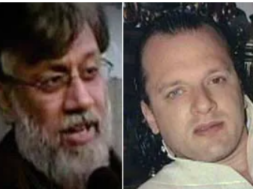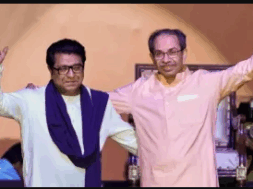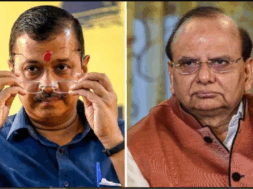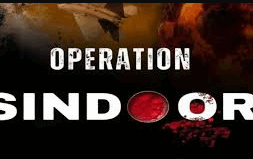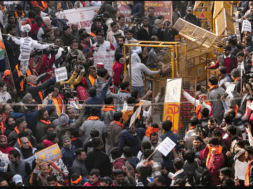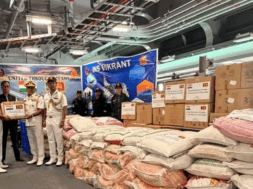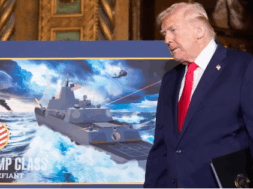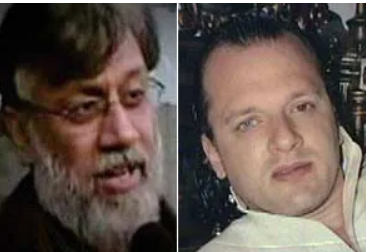
26/11: NIA to bring Tahawwur Rana to India, but the US ‘keeps’ Headley
Virendra Pandit
New Delhi: A team from India’s National Investigation Agency (NIA) is expected to fly to the US on January 30 to bring back Tahawwur Rana, one of the masterminds of the Mumbai terror attacks of November 26, 2008, in which 166 people were killed and several others injured.
India decided to dispatch a four-member NIA team days after the US Supreme Court rejected a review petition filed by Rana, who is wanted in India for his role in the 26/11 Mumbai terror attacks, to complete the formalities for his extradition. The Delhi Prisons Department is making arrangements in a high-security ward of Tihar Jail for Rana’s stay, the media reported on Tuesday.
Captain Tahawwur Hussain Rana, 64, is a former Pakistan Army doctor who allegedly deserted the military, gained Canadian citizenship, and became an immigration service businessman. On January 21, the US Supreme Court ruled “Petition DENIED,” and cleared the way for his extradition to India.
Rana had earlier lost battles in multiple federal courts, including the US Court of Appeals. After the USSC’s decision, New Delhi started preparing to bring him back to face trial.
Ironically, while the US decided to extradite the Pakistani-Canadian national to India, it refused to part with one of the key perpetrators, Daood Gilani aka David Coleman Headley, an American terrorist, known for assisting the Pakistan-based Islamist group Lashkar-e-Taiba (LeT) in planning the Mumbai attacks. He provided multiple surveillance and terrorist reconnaissance missions throughout central Mumbai.
Rana and Headley were old friends and classmates at the Hassan Abdal military academy near Islamabad. Both were tried on 12 counts by a US court and sentenced to 15 and 35 years in jail, respectively, in 2013.
Details of the Rana-Headley connection emerged from their indictment and trial in the US on terrorism charges. These were confirmed by the interrogation report of Headley by the NIA in June 2010, according to the media reports.
In September 2023, the Mumbai police filed a 400-page supplementary chargesheet revealing that Rana visited Mumbai a week before the attacks. The US court documents did not have this information, which suggests that he may have had a more sinister role to play in the attacks.
Rana came into the picture when Headley met him in Chicago in 2006 and told him about his LeT links and his decision to change his name to conceal his identity as a Christian American citizen. He also told him about his association with Pakistan’s Inter-Services Intelligence (ISI) and his assignment to conduct surveillance in Mumbai. He asked Rana whether he could set up a branch of his First World Immigration office there, and Rana agreed.
After his 2007 and 2008 visits, Headley kept Rana abreast of his activities there, including video surveillance of the Taj Mahal hotel and surveying a possible landing site for terrorists to infiltrate. He also briefed him on his conversations with Sajid Mir and Major Iqbal, two Pakistani ISI operatives. At least twice in his five visits to Mumbai, Headley received money from Rana at a bank located close to the Oberoi Hotel.
The US indictment noted that, since 2005, the two had “knowingly provided” material support — personnel, currency, tangible property, and false documentation and identification — to the LeT.
Despite this, Rana was actually acquitted on the counts relating to the Mumbai attacks. His conviction was on count 11 connected to the subsequent plot, of which Headley was also a part, to target the Danish newspaper Jyllands-Posten and on count 12 for providing material support to terrorists.
Rana’s defense counsel claimed that he was “easily the least culpable of all the members of the plot”. But there are many gaps in the American proceedings and this is what the Indian authorities now hope to fill after they obtain Rana’s custody.
Headley was not extradited to India because of his plea agreement with the US, which barred a death sentence and extradition to either India or Denmark. The US officials said they were provided significant information by him about the association and the involvement of the ISI in the attacks, about the personnel, structure, methods, abilities, and plans of the LeT, that his testimony helped convict Rana and that he had also answered the questions of Indian authorities for seven days. Besides, Headley’s actions also enabled the authorities to file criminal charges against six others — Sajid Mir, Abu Qahafa, Mazhar Iqbal, Major Iqbal, Ilyas Kashmiri and Abdur Rehman Hashim Syed.
Rana did not enter a plea deal or fully cooperate with the US authorities, and hence his extradition is taking place, albeit after a lengthy process. India did make efforts to extradite Headley as well. New Delhi sent a request to the US in December 2012, but America refused.
There is no easy closure on 26/11. Although Lashkar chief Hafiz Saeed is allegedly serving a 78-year sentence for terror financing and his deputy Zaki-ur-Rehman Lakhvi and Rana are serving a 15-year jail term for terrorism, the whereabouts of other perpetrators — Sajid Mir, Abu Qahafa, Mazhar Iqbal, Major Iqbal, Hashim Syed, Muzammil and Zarrar Shah — are not very clear.
Ilyas Kashmiri was killed in a US drone strike. After claiming that Sajid Mir, the main planner of the Mumbai attacks, was dead, Pakistan claimed it arrested him in July 2022 and sentenced him to eight years in prison for terror financing. Details of this matter are still murky because the US, which has indicted Mir, along with Headley, and which has a USD 5-million reward for him, would like to extradite him. Both Saeed and Mir were convicted of terror financing, not terrorist acts, in a successful bid to get Pakistan out of the grey list of the Financial Action Task Force (FATF).
In the light of the US proceedings, which saw his acquittal on charges relating directly to the Mumbai attacks, Rana claimed a peripheral role in 26/11 but he was suspected of a much deeper role. His Mumbai visit before the attacks, too, suggested this.
India is not satisfied with the US investigations, especially of the role of local Indians who may have been involved in the conspiracy. There is a reference to a “Bashir Sheikh”, who received Headley on behalf of Rana in Mumbai during his first visit there and was his contact during his subsequent visits as well. He has not even been identified so far, let alone arrested.
Intelligence agencies followed other trails, suggesting that some more locals were part of the support framework of the Mumbai attackers. Rana’s extradition will help fill important gaps in the probe into a tragedy that traumatized India for a long time.
